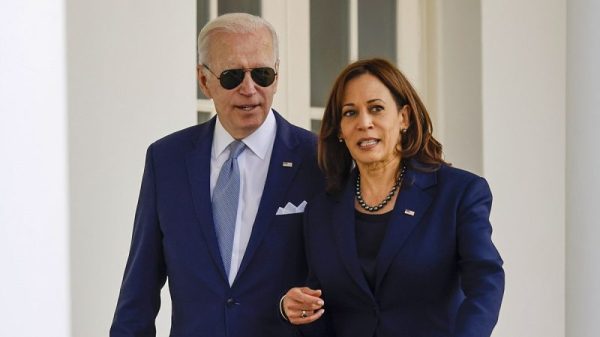A mammoth bill advancing a broad range of President Donald Trump’s policy goals survived a key hurdle on Thursday, putting Republicans closer to their goal of passing a bill by sometime in May.
The legislation passed the House Budget Committee on a party-line 21 to 16 vote and is expected to be taken up by the entire chamber for a floor vote later this month.
It comes despite eleventh-hour negotiations that had the bill’s eventual passage in question even as the committee met to discuss the text on Thursday morning.
The 45-page resolution directs various House committees to find a sum of at least $1.5 trillion in spending cuts, with $300 billion in new spending allocated toward the border, national defense and the judiciary.
It also directs $4 trillion toward raising the debt limit, and it includes $4.5 trillion to extend Trump’s 2017 Tax Cuts and Jobs Act (TCJA) and other tax provisions pushed by the president for the next 10 years.
House and Senate Republicans are aiming to use the budget reconciliation process to pass a broad range of Trump policy goals, from border security to eliminating taxes on tipped and overtime wages.
By lowering the threshold for passage in the Senate from two-thirds to a simple majority, it will allow the GOP to use their razor-thin majorities to get legislation signed into law with zero Democratic support, provided the measures included relate to the budget and other fiscal matters.
Conservative spending hawks on the House Budget Committee had demanded assurances that Republicans would seek to cut spending as deeply as possible in the reconciliation process, particularly to offset new spending on Trump’s tax priorities.
House Budget Chairman Jodey Arrington, R-Texas, told reporters early Thursday afternoon that committee Republicans came to an agreement on an amendment that would win over holdouts, however.
The proposal would mandate a corresponding reduction in the $4.5 trillion tax allocation if Republicans failed to cut at least $2 trillion in spending elsewhere.
Conversely, if spending cuts exceeded $2 trillion, it would increase the amount of money directed toward tax cuts by the same amount.
‘The amendment that will come up is a good amendment,’ Rep. Ralph Norman, R-S.C., a Budget Committee fiscal hawk who had issues with the original text, told Fox News Digital. ‘It’s common sense. It’s doing what we said we’d be doing.’
The House advanced its proposal after being forced to punt the committee vote last week in the face of disagreements over where to set the baseline floor for spending cuts.
Senate Republicans advanced their own plan in the meantime, passing a narrower bill on Wednesday night that included new funding for the border and defense but would leave Trump’s tax cuts for a second package.
Speaker Mike Johnson, R-La., called that bill a ‘nonstarter’ in the House.
But while the House’s bill passed a critical test on Thursday, it’s just the first step in a long process.
Passing a budget resolution then sends instructions to other committees to seek cuts and policy changes in their respective jurisdictions, before those proposals are added back to one large bill.
The House and Senate must also agree on a compromise between their two versions and pass identical pieces of legislation before they can be sent to Trump’s desk.
Republicans have a three seat majority in the Senate and a one seat majority in the House, meaning they can afford precious little dissent among themselves to pass a final bill.


































